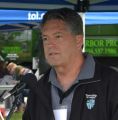ARTICLE: "Sustainable Watershed Systems, through Asset Management" introduced to BC professional engineers (Oct 2016)

Communities are starting to recognize the value of natural assets and their role in local government service delivery, and include natural assets in their asset management programs. “The BC Framework links local government services, the infrastructure that supports service delivery, and watershed health,” states Brian Bedford. “It is a powerful tool for local governments to focus community planning and infrastructure decision-making.”









